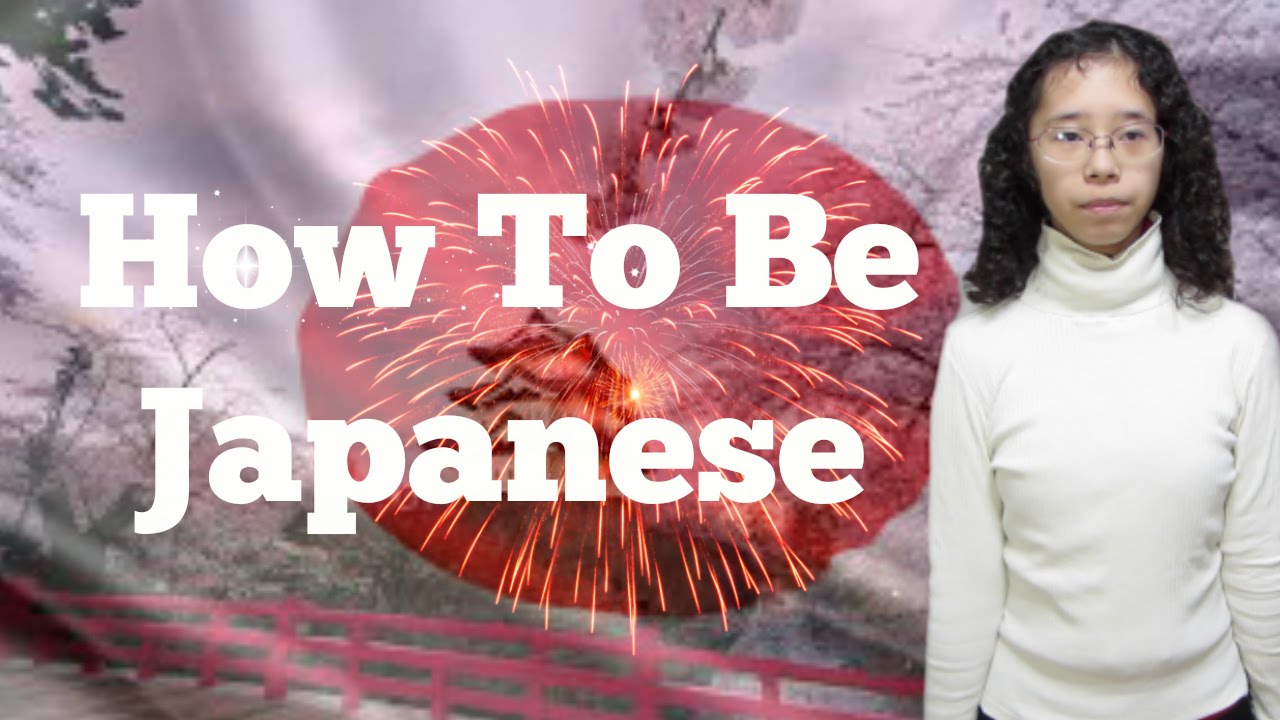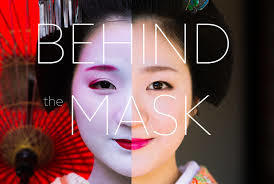Having taught in Japan for a number of years at various institutions, which includes schools, universities, and even the popular Eikaiwas (language-conversation schools), a common question I get from non-Japanese teachers is: “Why do Japanese call you by your last name?” Some even phrase it as: “How did you get them (Japanese) to call you Amaru-sensei instead of by your first-name?” In addition to this they are usually curious as to why Japanese communicate with me in their language instead of English. Since many westerners only speak in their native tongue some naturally assume it has to do with my Japanese-ability. Well, considering that I’m far from fluent, I assure you this is not the case. Perhaps these people should just be more upfront and ask what they really want to know, which is: How are you able to circumvent the Japanese Code?
Until about 10 years ago, I used to respond to this question very frankly; but I stopped doing so because, simply put, nobody believed my answer. Therefore, I concluded, the best way to respond (if I reply at all) is to encourage people to use their common-sense.
Code of Ethics
For a Japanese person who deals with a non-Japanese on a daily basis in any type of professional relationship—especially a westerner—there are systematic rules of conduct. Perhaps at the top of the list is NOT speaking to them in Japanese, but instead in English (the Figurative Eigo-hoe mentioned in the 9th edition is a great example of this). And be forewarned, it doesn’t matter if the person is from a country that doesn’t speak English such as France, Germany, or Italy because Japanese are trained that all foreigners speak English. Another tenet which is followed closely is to address foreign teachers by their first names plus the honorific sensei, which means teacher. However for Japanese teachers the last name plus sensei is used, which corresponds with the western custom of using Mr. / Ms. (or Professor) plus the last name. Hmm, let’s think for a moment: if students in the U.S. or Canada, as a rule across the board, insisted on calling their foreign-language teachers by their first names, would this be considered disrespectful (if not discriminatory)?
Can you imagine addressing your high-school, Spanish teacher as ‘Mr. Jose’ instead of ‘Mr. Gonzalez?’
Saving Face is a Component of Tatemae
Although every nation instructs their youth on what is, and what is not, acceptable behavior, I believe many westerners would be shocked if they understood the amount of time and effort the average Japanese spends (not to mention all the counseling from elders) learning how to avoid committing any sort of social gaffe which might result in embarrassment or public humiliation—which just means learning how to save face.  “It’s been pounded into us so hard it has become instinct,” explained Morimoto-sensei who, in addition to being a Buddhist priest, also taught History at a school where I worked. According to him, this inclination has become so natural…so ingrained in the mind of every Japanese he compared it to “a program which is constantly running in the background of our psyche.” You may be wondering, where is all this “pounding” into the psyche taking place? The answer is everywhere; but perhaps most importantly at school. If truth be told, teaching students how to function in society—not academic studies—is the main theme of both public and private schools in Japan. While students do attend classes on math, science, geography, etc., the actual nuts and bolts of the teaching occurs in after-school lessons called Gakushu Juku (学習塾), or simply “Juku.” I was confused as to why so much emphasis was being placed on training youngsters on how to function in society until Morimoto-sensei explained that the ability to “save face” is the basis of all Japanese interactions, which includes relationships. Unlike in western culture, where children are encouraged to think independently, Japanese are taught from pre-school not to “rock the boat.” It must be noted that although maintaining the harmony, known as Wa (和), is indispensable to navigate through life’s daily challenges, it is virtually impossible to maintain “Wa” in all situations; therefore behavior is constantly being policed in various ways by the greater society. Some of this reinforcement is as subtle as people simply staring at whoever is deemed to be coloring outside the lines, which is the same as a “glitch in the matrix.”
“It’s been pounded into us so hard it has become instinct,” explained Morimoto-sensei who, in addition to being a Buddhist priest, also taught History at a school where I worked. According to him, this inclination has become so natural…so ingrained in the mind of every Japanese he compared it to “a program which is constantly running in the background of our psyche.” You may be wondering, where is all this “pounding” into the psyche taking place? The answer is everywhere; but perhaps most importantly at school. If truth be told, teaching students how to function in society—not academic studies—is the main theme of both public and private schools in Japan. While students do attend classes on math, science, geography, etc., the actual nuts and bolts of the teaching occurs in after-school lessons called Gakushu Juku (学習塾), or simply “Juku.” I was confused as to why so much emphasis was being placed on training youngsters on how to function in society until Morimoto-sensei explained that the ability to “save face” is the basis of all Japanese interactions, which includes relationships. Unlike in western culture, where children are encouraged to think independently, Japanese are taught from pre-school not to “rock the boat.” It must be noted that although maintaining the harmony, known as Wa (和), is indispensable to navigate through life’s daily challenges, it is virtually impossible to maintain “Wa” in all situations; therefore behavior is constantly being policed in various ways by the greater society. Some of this reinforcement is as subtle as people simply staring at whoever is deemed to be coloring outside the lines, which is the same as a “glitch in the matrix.”
Only 1 Correct Way
Seiza (正座) is translated as the “correct or proper way of sitting.” Since Japanese are instructed there is only one correct way to do things, by default, this means all other forms of sitting are incorrect. Although this is just one example, please be aware this extends to every life activity; so there is a “correct way” to eat, walk, sleep, have your hair cut, so on and so forth.  A writer / world traveler that I had the pleasure of chopping-it-up with last year in New Zealand, David Leberknight, told me about 20 years ago he worked as a systems-engineer in Tokyo and, during that time, he noticed that Japanese tend to live by what he described as a “(pre-ordained) script.” While he explained his theory, a bell rang in my head as I realized the script he referred to was equivalent to learning the “correct” and “proper” way to respond or behave in EVERY situation. Please understand, if this is true, it suggests that anyone who has a copy of the script can learn how to avoid any unpleasant situation—including being treated as a gaijin. Now this is where I may have an advantage. Even though I never met my (biological) grandparents due to both my folks being shunned by their families for marrying outside their race, like many in need, I was fortunate to meet others who stepped in to fill the void. One such man, who I revere as a grandfather figure, told me as a boy: “Never allow Japanese to call you gaijin.” Moreover, he also warned me not to accept any of the discrimination which accompanies such a designation. According to him, it was okay for whites to be labeled ‘gaijin’ because, in his own words: “those bastards dropped atomic bombs on us—but not on Germany!”
A writer / world traveler that I had the pleasure of chopping-it-up with last year in New Zealand, David Leberknight, told me about 20 years ago he worked as a systems-engineer in Tokyo and, during that time, he noticed that Japanese tend to live by what he described as a “(pre-ordained) script.” While he explained his theory, a bell rang in my head as I realized the script he referred to was equivalent to learning the “correct” and “proper” way to respond or behave in EVERY situation. Please understand, if this is true, it suggests that anyone who has a copy of the script can learn how to avoid any unpleasant situation—including being treated as a gaijin. Now this is where I may have an advantage. Even though I never met my (biological) grandparents due to both my folks being shunned by their families for marrying outside their race, like many in need, I was fortunate to meet others who stepped in to fill the void. One such man, who I revere as a grandfather figure, told me as a boy: “Never allow Japanese to call you gaijin.” Moreover, he also warned me not to accept any of the discrimination which accompanies such a designation. According to him, it was okay for whites to be labeled ‘gaijin’ because, in his own words: “those bastards dropped atomic bombs on us—but not on Germany!”
Japanese vs. Gaijin
For every Japanese (whether they admit it or not) there are only two types of people: Japanese and foreigners. A possible third choice is the biracial label, Hafu, which has gained some popularity in the media with the rise of numerous biracial entertainers/athletes including, Naomi Osaka and Rui Hachimura. I have never chosen this tag to describe myself for reasons I won’t explain here. That said, it’s a complete slap in the face for me to be classified with gaijin by my Japanese brethren. This is totally unacceptable. So have you figured out how to trump the code yet? If not, you haven’t been paying close attention because I have given all the clues but you have to use some wit and common-sense to piece the fragments together.
I have never chosen this tag to describe myself for reasons I won’t explain here. That said, it’s a complete slap in the face for me to be classified with gaijin by my Japanese brethren. This is totally unacceptable. So have you figured out how to trump the code yet? If not, you haven’t been paying close attention because I have given all the clues but you have to use some wit and common-sense to piece the fragments together.
If there is a “correct” way to be Japanese—a code so to speak—then all one must do is follow the code. If done correctly, no matter by whom, any Japanese person is forced to comply accordingly or lose face, which can result in being ostracized by the members of their group. So yes, believe it or not, native born-and-bred Japanese can be marginalized just like a foreigner. This is on-par with how conservative Caucasians have been known to stigmatize liberals with the label “N-gg-r-lover” if they become too radical. Is cracking the code easy to accomplish? Of course not. In addition to memorizing the script and attaining some competency in the language, the ability to access a certain frequency—a Japanese frequency—is also necessary. For more details on these factors plus much more, please stay tuned for the book: Modern Japan—decoded!
 Takuan Amaru is the author of the trilogy, Gaikokujin – the Story.
Takuan Amaru is the author of the trilogy, Gaikokujin – the Story.
Takuan Amaru
Having taught in Japan for a number of years at various institutions, which includes schools, universities, and even the popular Eikaiwas (language-conversation schools), a common question I get from non-Japanese teachers is: “Why do Japanese call you by your last name?” Some even phrase it as: “How did you get them (Japanese) to call you Amaru-sensei instead of by your first-name?” In addition to this they are usually curious as to why Japanese communicate with me in their language instead of English. Since many westerners only speak in their native tongue some naturally assume it has to do with my Japanese-ability. Well, considering that I’m far from fluent, I assure you this is not the case. Perhaps these people should just be more upfront and ask what they really want to know, which is: How are you able to circumvent the Japanese Code?
Until about 10 years ago, I used to respond to this question very frankly; but I stopped doing so because, simply put, nobody believed my answer. Therefore, I concluded, the best way to respond (if I reply at all) is to encourage people to use their common-sense.
Code of Ethics
For a Japanese person who deals with a non-Japanese on a daily basis in any type of professional relationship—especially a westerner—there are systematic rules of conduct. Perhaps at the top of the list is NOT speaking to them in Japanese, but instead in English (the Figurative Eigo-hoe mentioned in the 9th edition is a great example of this). And be forewarned, it doesn’t matter if the person is from a country that doesn’t speak English such as France, Germany, or Italy because Japanese are trained that all foreigners speak English. Another tenet which is followed closely is to address foreign teachers by their first names plus the honorific sensei, which means teacher. However for Japanese teachers the last name plus sensei is used, which corresponds with the western custom of using Mr. / Ms. (or Professor) plus the last name. Hmm, let’s think for a moment: if students in the U.S. or Canada, as a rule across the board, insisted on calling their foreign-language teachers by their first names, would this be considered disrespectful (if not discriminatory)?
Can you imagine addressing your high-school, Spanish teacher as ‘Mr. Jose’ instead of ‘Mr. Gonzalez?’
Saving Face is a Component of Tatemae
Although every nation instructs their youth on what is, and what is not, acceptable behavior, I believe many westerners would be shocked if they understood the amount of time and effort the average Japanese spends (not to mention all the counseling from elders) learning how to avoid committing any sort of social gaffe which might result in embarrassment or public humiliation—which just means learning how to save face.  “It’s been pounded into us so hard it has become instinct,” explained Morimoto-sensei who, in addition to being a Buddhist priest, also taught History at a school where I worked. According to him, this inclination has become so natural…so ingrained in the mind of every Japanese he compared it to “a program which is constantly running in the background of our psyche.” You may be wondering, where is all this “pounding” into the psyche taking place? The answer is everywhere; but perhaps most importantly at school. If truth be told, teaching students how to function in society—not academic studies—is the main theme of both public and private schools in Japan. While students do attend classes on math, science, geography, etc., the actual nuts and bolts of the teaching occurs in after-school lessons called Gakushu Juku (学習塾), or simply “Juku.” I was confused as to why so much emphasis was being placed on training youngsters on how to function in society until Morimoto-sensei explained that the ability to “save face” is the basis of all Japanese interactions, which includes relationships. Unlike in western culture, where children are encouraged to think independently, Japanese are taught from pre-school not to “rock the boat.” It must be noted that although maintaining the harmony, known as Wa (和), is indispensable to navigate through life’s daily challenges, it is virtually impossible to maintain “Wa” in all situations; therefore behavior is constantly being policed in various ways by the greater society. Some of this reinforcement is as subtle as people simply staring at whoever is deemed to be coloring outside the lines, which is the same as a “glitch in the matrix.”
“It’s been pounded into us so hard it has become instinct,” explained Morimoto-sensei who, in addition to being a Buddhist priest, also taught History at a school where I worked. According to him, this inclination has become so natural…so ingrained in the mind of every Japanese he compared it to “a program which is constantly running in the background of our psyche.” You may be wondering, where is all this “pounding” into the psyche taking place? The answer is everywhere; but perhaps most importantly at school. If truth be told, teaching students how to function in society—not academic studies—is the main theme of both public and private schools in Japan. While students do attend classes on math, science, geography, etc., the actual nuts and bolts of the teaching occurs in after-school lessons called Gakushu Juku (学習塾), or simply “Juku.” I was confused as to why so much emphasis was being placed on training youngsters on how to function in society until Morimoto-sensei explained that the ability to “save face” is the basis of all Japanese interactions, which includes relationships. Unlike in western culture, where children are encouraged to think independently, Japanese are taught from pre-school not to “rock the boat.” It must be noted that although maintaining the harmony, known as Wa (和), is indispensable to navigate through life’s daily challenges, it is virtually impossible to maintain “Wa” in all situations; therefore behavior is constantly being policed in various ways by the greater society. Some of this reinforcement is as subtle as people simply staring at whoever is deemed to be coloring outside the lines, which is the same as a “glitch in the matrix.”
Only 1 Correct Way
Seiza (正座) is translated as the “correct or proper way of sitting.” Since Japanese are instructed there is only one correct way to do things, by default, this means all other forms of sitting are incorrect. Although this is just one example, please be aware this extends to every life activity; so there is a “correct way” to eat, walk, sleep, have your hair cut, so on and so forth.  A writer / world traveler that I had the pleasure of chopping-it-up with last year in New Zealand, David Leberknight, told me about 20 years ago he worked as a systems-engineer in Tokyo and, during that time, he noticed that Japanese tend to live by what he described as a “(pre-ordained) script.” While he explained his theory, a bell rang in my head as I realized the script he referred to was equivalent to learning the “correct” and “proper” way to respond or behave in EVERY situation. Please understand, if this is true, it suggests that anyone who has a copy of the script can learn how to avoid any unpleasant situation—including being treated as a gaijin. Now this is where I may have an advantage. Even though I never met my (biological) grandparents due to both my folks being shunned by their families for marrying outside their race, like many in need, I was fortunate to meet others who stepped in to fill the void. One such man, who I revere as a grandfather figure, told me as a boy: “Never allow Japanese to call you gaijin.” Moreover, he also warned me not to accept any of the discrimination which accompanies such a designation. According to him, it was okay for whites to be labeled ‘gaijin’ because, in his own words: “those bastards dropped atomic bombs on us—but not on Germany!”
A writer / world traveler that I had the pleasure of chopping-it-up with last year in New Zealand, David Leberknight, told me about 20 years ago he worked as a systems-engineer in Tokyo and, during that time, he noticed that Japanese tend to live by what he described as a “(pre-ordained) script.” While he explained his theory, a bell rang in my head as I realized the script he referred to was equivalent to learning the “correct” and “proper” way to respond or behave in EVERY situation. Please understand, if this is true, it suggests that anyone who has a copy of the script can learn how to avoid any unpleasant situation—including being treated as a gaijin. Now this is where I may have an advantage. Even though I never met my (biological) grandparents due to both my folks being shunned by their families for marrying outside their race, like many in need, I was fortunate to meet others who stepped in to fill the void. One such man, who I revere as a grandfather figure, told me as a boy: “Never allow Japanese to call you gaijin.” Moreover, he also warned me not to accept any of the discrimination which accompanies such a designation. According to him, it was okay for whites to be labeled ‘gaijin’ because, in his own words: “those bastards dropped atomic bombs on us—but not on Germany!”
Japanese vs. Gaijin
For every Japanese (whether they admit it or not) there are only two types of people: Japanese and foreigners. A possible third choice is the biracial label, Hafu, which has gained some popularity in the media with the rise of numerous biracial entertainers/athletes including, Naomi Osaka and Rui Hachimura. I have never chosen this tag to describe myself for reasons I won’t explain here. That said, it’s a complete slap in the face for me to be classified with gaijin by my Japanese brethren. This is totally unacceptable. So have you figured out how to trump the code yet? If not, you haven’t been paying close attention because I have given all the clues but you have to use some wit and common-sense to piece the fragments together.
I have never chosen this tag to describe myself for reasons I won’t explain here. That said, it’s a complete slap in the face for me to be classified with gaijin by my Japanese brethren. This is totally unacceptable. So have you figured out how to trump the code yet? If not, you haven’t been paying close attention because I have given all the clues but you have to use some wit and common-sense to piece the fragments together.
If there is a “correct” way to be Japanese—a code so to speak—then all one must do is follow the code. If done correctly, no matter by whom, any Japanese person is forced to comply accordingly or lose face, which can result in being ostracized by the members of their group. So yes, believe it or not, native born-and-bred Japanese can be marginalized just like a foreigner. This is on-par with how conservative Caucasians have been known to stigmatize liberals with the label “N-gg-r-lover” if they become too radical. Is cracking the code easy to accomplish? Of course not. In addition to memorizing the script and attaining some competency in the language, the ability to access a certain frequency—a Japanese frequency—is also necessary. For more details on these factors plus much more, please stay tuned for the book: Modern Japan—decoded!
 Takuan Amaru is the author of the trilogy, Gaikokujin – the Story.
Takuan Amaru is the author of the trilogy, Gaikokujin – the Story.

